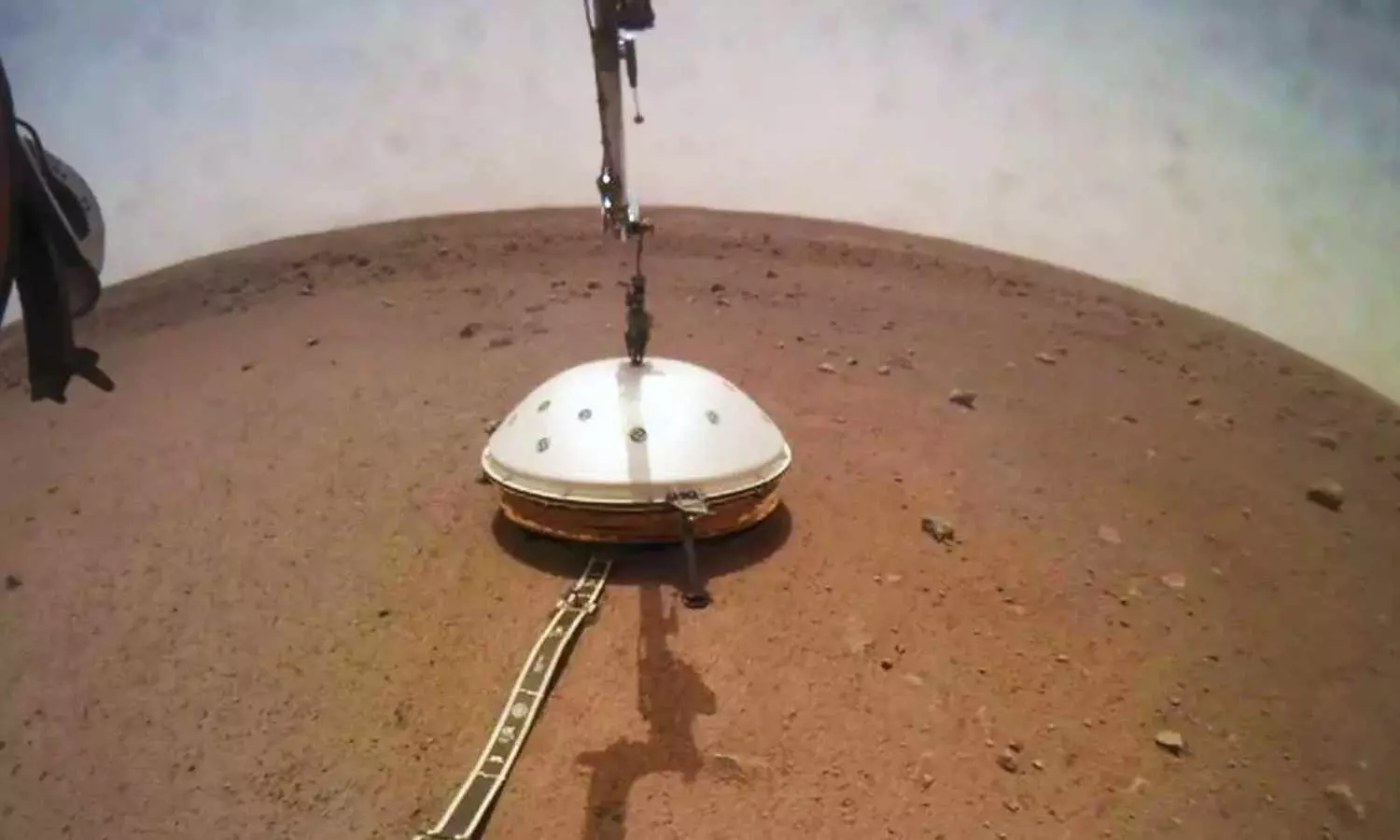Two Mars spacecraft teamed up with AI to find a fresh impact crater on the surface
The Martian landscape continues to reveal unexpected geological phenomena to researchers. The Red Planet does not have Earth-like tectonic movements but still exhibits seismic activity due to internal forces and meteoroid impacts.
Two Mars spacecraft teamed up with AI to find a fresh impact crater on the surface

India Today Science News: Artificial intelligence-driven research uncovered a new Martian crater which demonstrates the extent to which seismic waves from impacts can penetrate the planet.
The discovery provides evidence that contradicts current models of the planet’s internal structure while offering fresh perspectives on its geological development.
Scientists demonstrated through two recent Geophysical Research Letters publications how they connected a new crater's formation with seismic data collected by NASA’s InSight lander.
The recent discovery reveals a significant advancement in Martian science demonstrating that tremors from impacts reach deeper into the planet's mantle than previously believed.
The Mars Reconnaissance Orbiter (MRO) data allows scientists to improve their understanding of the Martian subsurface which expands knowledge about both Mars quake and other rocky celestial bodies including Earth and its Moon.
Impact crater that changed Mars research
Throughout its four-year mission InSight recorded over 1,300 marsquakes with some originating from internal processes and others resulting from space rocks colliding with Mars.
Mars impact craters and seismic waves
Planetary scientists have traditionally used seismic data to explore the internal structures of planets. Research into Earth's internal structure depends on earthquakes to reveal interactions between different planetary layers.
Scientists study Mars’s subsurface structures by analyzing marsquake and impact events because seismic activity on Mars is significantly less intense.
The new Mars crater with a 71-foot (21.5 meter) diameter sits more than 1,019 miles (1,640 km) away from the InSight landing site.
The impact event generated seismic energy which was unexpectedly strong at that far distance. The initial scientific assumption was that Mars’s crust would absorb seismic waves from impacts before they reached the InSight lander. However, this event proved otherwise.
InSight team member Constantinos Charalambous from Imperial College London said that experts previously believed seismic energy from most events stayed within the Martian crust.
Our discovery reveals a rapid underground route through the mantle which functions as a seismic highway and enables earthquakes to affect distant parts of the planet.

